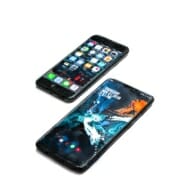Do You Have A Great App Idea? 5 Tips To Get It Validated
Coming up with a great app idea can seem easy at times. But what may not seem easy is ascertaining if that app idea is truly feasible. If most developers were honest, they’d admit they lucked out on some of their best and most profitable ideas. Instead, they’d like everyone to believe they’re geniuses for coming up with winning ideas.
Of course, some top-tier app developers have a methodology for brainstorming ideas and validating them. And that’s what we want to focus on right now!
We’re not interested in revealing tips aimed at opportunistic appreneurs and developers that want to make a quick buck from current trends. And that’s because this is not a sustainable way to push out compelling apps at a regular cadence.
Instead, we want developers to work systematically to achieve consistent results regularly. We also want developers to think of themselves as problem solvers and not simply studios that push out code.
While working with new technologies is always fun, we should never lose track of the fact that we’re here to provide solutions. Our goals should always align with those of our clients and users. And that’s to make life easier for them by solving problems that hold them back or impact productivity.
However, you may be at this point now where you have a great app idea that will solve a problem users experience. But how do you validate it to know for certain that it will serve your target market well? Read on, as we’re about to reveal several handy tips to help you through the validation process.
1. Market Research Is A Must!
Never commence planning and developing an app without conducting market research first. And that’s because you need to know if your app is unique or improves on existing ideas. And if the market already has competitors, can you compete by offering something different or better?
Moreover, you should clearly define your app’s unique selling point (USP). Ask yourself what sets it apart from competing apps and how your users will benefit.
And possibly, create a prototype to show your team, company stakeholders, or even a small focus group. Then, ask them for feedback on what they think of the app and if they can pinpoint its USP and potential target audience.
2. The Early Stages Of The Validation Process
As a startup with limited time and money, going through the validation process may seem challenging. But we recommend that you don’t skimp on this step, as it will help determine if you have a great app idea or not.
We mentioned earlier about building a prototype and showing it to relevant parties. However, you can take things further by setting specific validation goals.
For example, you may decide not to build a prototype but focus on pitching your idea to investors. If you manage to convince five or more investors about the virtues of your app idea, then that’s a good sign. Or you can work with another metric: if 100 or more potential users view your concept design on social media and react positively — you may want to greenlight the project.
As you may understand by now, there are several ways you can go with this. And by setting several validation goals that you can measure, you can gain real-world feedback without breaking the bank. But only doing the above won’t be substantial for most projects, even though it’s a good starting point.
3. Effective Ways To Validate A Great App Idea
Real-world feedback is an ongoing theme with app validation. And that’s because there’s no better way to determine if there’s interest in your app concept or idea.
So, focus on ways to receive user feedback from potential users. But also ensure that you research the size and value of the market you’re targeting. And no matter how much you like your idea, don’t invest in developing it into a full-fledged app without thorough market validation.
But how do you thoroughly validate the market? Well, one of the best ways to do this is with a minimum viable product (MVP). An MVP is a stripped-down version of your app with the bare minimum of functionality. And the main advantage of this is that you can deliver an MVP to your users cheaply and quickly.
Should it prove popular with users, you can scale it into a fully-fledged app and implement the features that users have suggested. However, if it fails to gain traction, you can scrap the project or implement changes that may make it more appealing to users. The latter may be the way to go if there’s still middling interest and users have made suggestions.
4. Conduct User Surveys
Another good way to ascertain if you’re on to a great app idea is via user surveys. Start by creating a customer profile that represents your ideal users. Your customer profile may have the age, demographic, education, hobby, location, and spending attributes.
If your customer profile slants to the younger ages, you may want to find users on a platform such as TikTok. And if they’re older professionals, you may want to track them down on LinkedIn. Either way, you should have a clear picture of your target group so you can survey them properly.
Ensure that you tailor your survey for your target group and use language and tone that appeals to them. Moreover, respect their time by not asking more questions than you have to or asking complicated questions that are too difficult to answer. Ideally, you want these users to complete your entire survey and not give up halfway through.
5. Pre-Selling And Pre-Registration
Another effective way to test your app idea is by setting up a pre-selling landing page. This landing page will feature a description of your app, screenshots, and a promo video to create buzz. Furthermore, visitors can easily register and submit their email addresses to stay updated.
What’s so compelling about this approach is that it’s a way to attract early adopters. And the higher number of these early adopters, the more validation you receive for your app. Moreover, it can act as a revenue stream if you need to generate income before launching your app officially.
But if setting up a landing page and maintaining an email list isn’t your thing, there’s no need to despair. Google Play offers pre-registration for your app so that you can build hype and user relationships before launch. This is done directly on the Play Console and is implemented 3-6 weeks before the launch date.
It’s an effective way to drive traffic to your app’s store page. And it’s possible for Google Play to automatically deliver your app to users and auto-install it on their devices on launch day. Thus, it’s almost certain that you’ll have users on day one with a limited amount of work on your end. You can also use Google’s pre-marketing tools to boost interest further.
The Bottom Line
When you have a great app idea, you’ll want to validate it as soon as possible. The good news is that there are several ways to go about this, as we’ve already covered above. However, there’s a bit of additional work involved, which may increase your costs and time to market (TTM).
But if you work with experts, such as NS804, you’ve got a partner to help you navigate this process. Contact us today to learn how we’ll help you validate your best ideas and turn them into phenomenal apps!











 https://www.pexels.com/photo/white-ipad-38271/
https://www.pexels.com/photo/white-ipad-38271/
Leave a Reply
Want to join the discussion?Feel free to contribute!